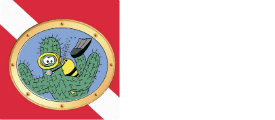Diving in Quepos and Manuel Antonio N.P.
For those who spend their vacation in Costa Rica immersed in the cloud forests of Monteverde or on the tranquil slopes of Arenal, arriving in Quepos, the gateway to Manuel Antonio National Park can be quite a reality shock. The hustle and bustle of the small city as well as the throngs of people waiting to enter the country’s smallest National Park can be off-putting for many; however, the warm waters off the coast here are teaming with marine life and Quepos is notorious as a seafaring and Watersports location, offering the best guides, equipment and diving.
Diving from Manuel Antonio National Park is one of the most enjoyable experiences of Costa Rica’s central Pacific coast. Here you’ll find a variety of environments created by the area’s volcanic origins (caverns, deep sea pinnacles and soft corals). Throngs of spadefish, trumpetfish and sergeant majors are a common sight here. In the Quepos and Manuel Antonio area there is a high nutrient content in the water, which brings an unbelievable amount of marine life. Sea turtles, pan-tropical dolphins, Moorish idols, octopus, seahorses and pufferfish are common. Though the visibility does vary it is normally in the region of 30 – 65 feet in the dry season (Dec – May) and 10 – 40 feet in the rainy season (June – November). here is very little variation throughout the year. Be careful of surge in the central pacific coast, while currents can be weak, surge waves can be strong and sudden.
While most of the diving operations will take place from small speed boats to the costal sites, there are trips to Cano island further offshore. The half days’ trips to Manuel Antonio National Park requires a 16-dollar park fee. Snorkelling tours are also available.
Veinte Seis
An exciting new discovery. Veinte Seis (26) is an offshore ‘deep’ pinnacle an hour by boat and 22 nautical miles from Quepos. Originally found by fishermen the site is a divers paradise with large shoals of fish. Beginning at 95 feet below the surface the dive is for advanced individuals only. Huge groups of jacks, tuna and other pelagic life circle the rock column. The sand bottom at 130 feet is where other larger species reside, look for Pacific stingrays and even mantas above.
Around the deeper seamounts marine mammals have been seen including whales and dolphins. Manta rays, during the dry season, will frequent areas where upwelling are created.
Arriving in Quepos can be the most difficult part of the entire experience. The closest international airport is Juan Santamaria International Airport in San Jose. From the capital city to Queposis a 3-hour journey by car. Once in the town of Quepos make your way to the marina where most dive centres await.


